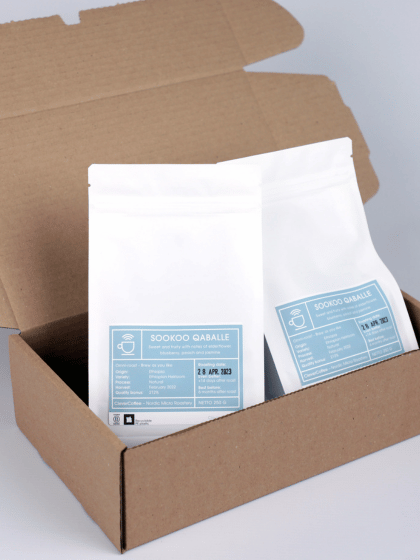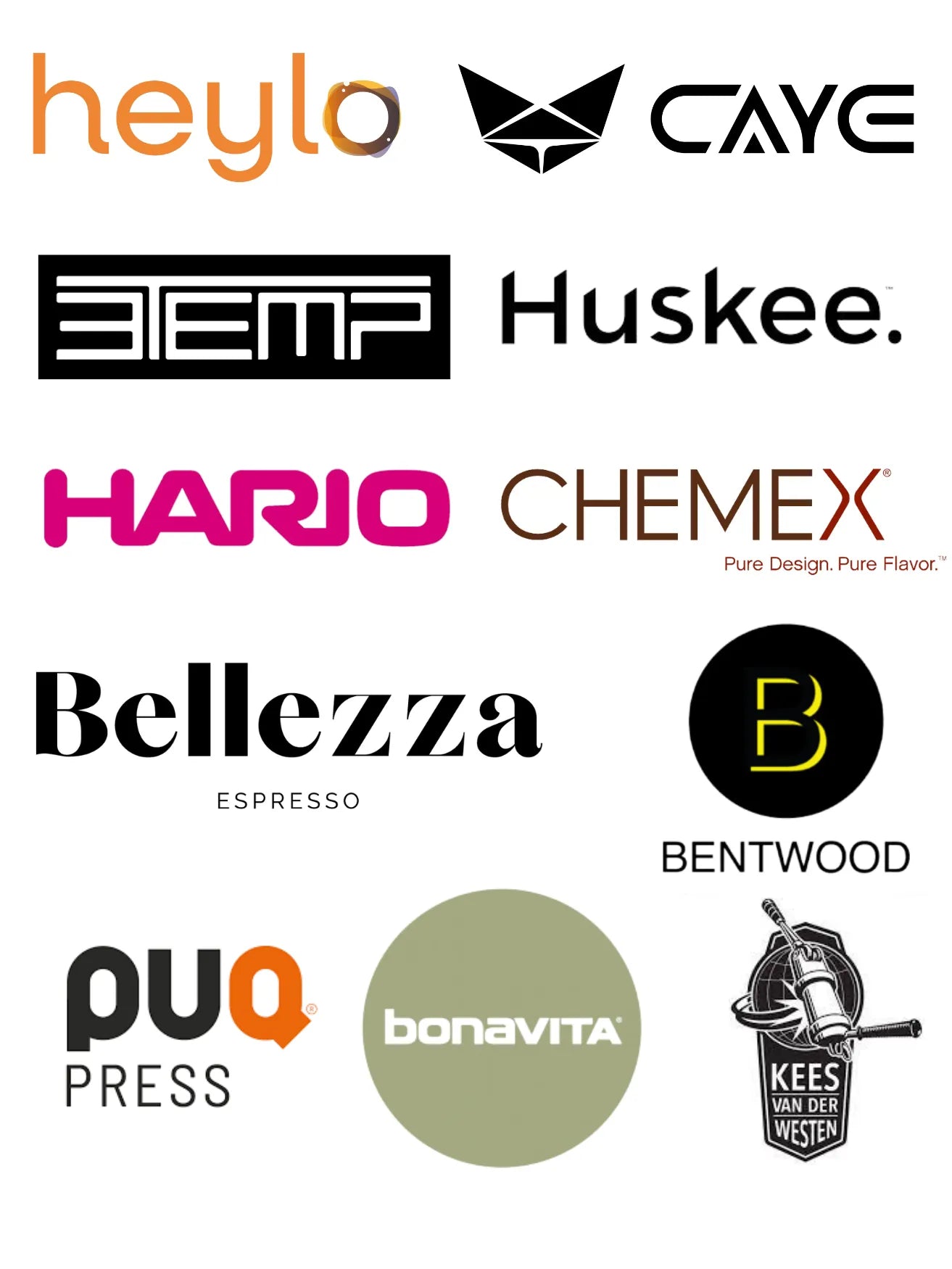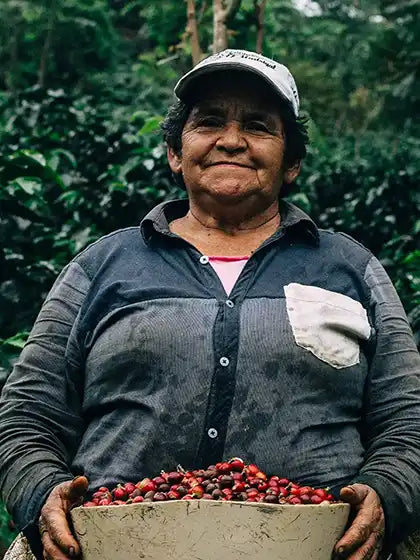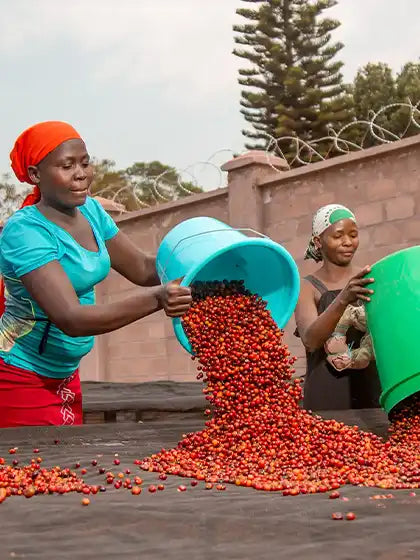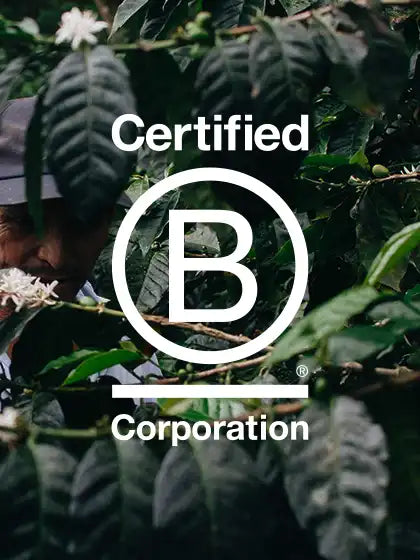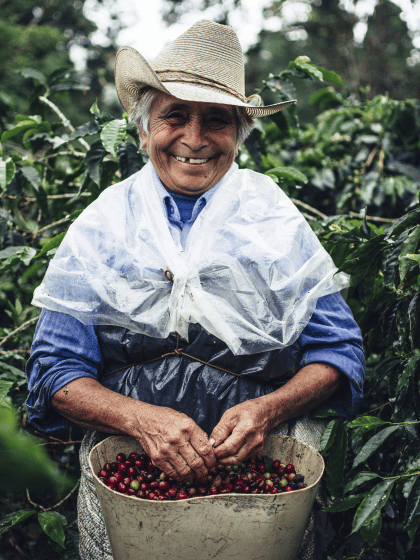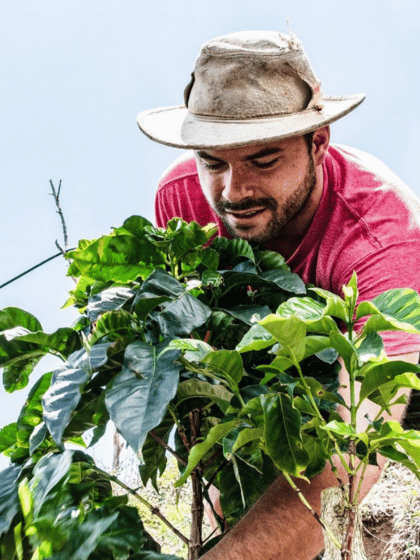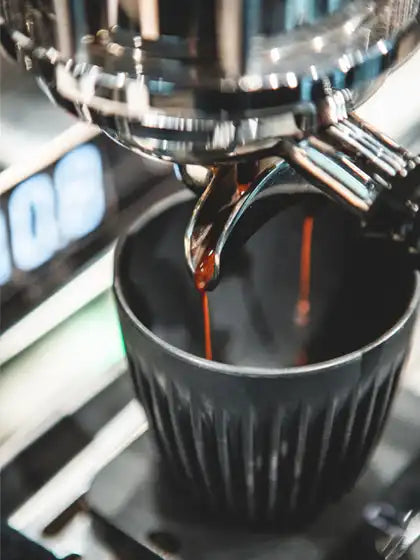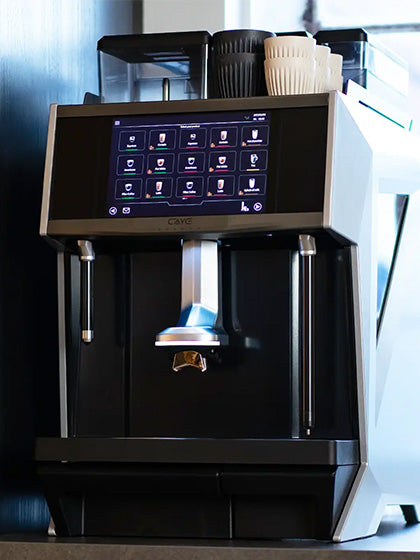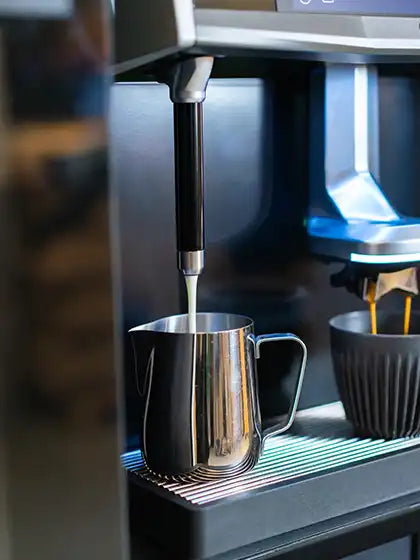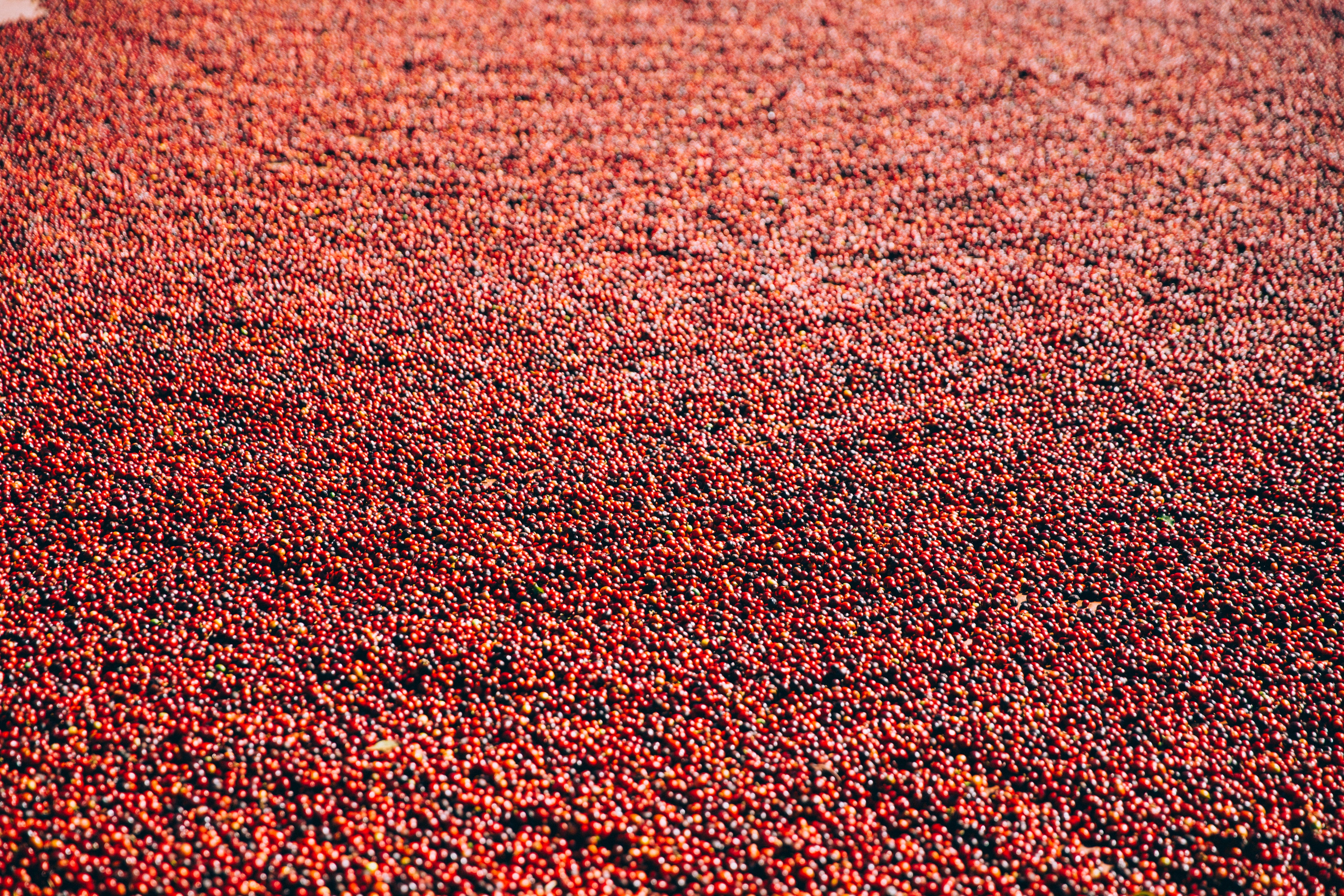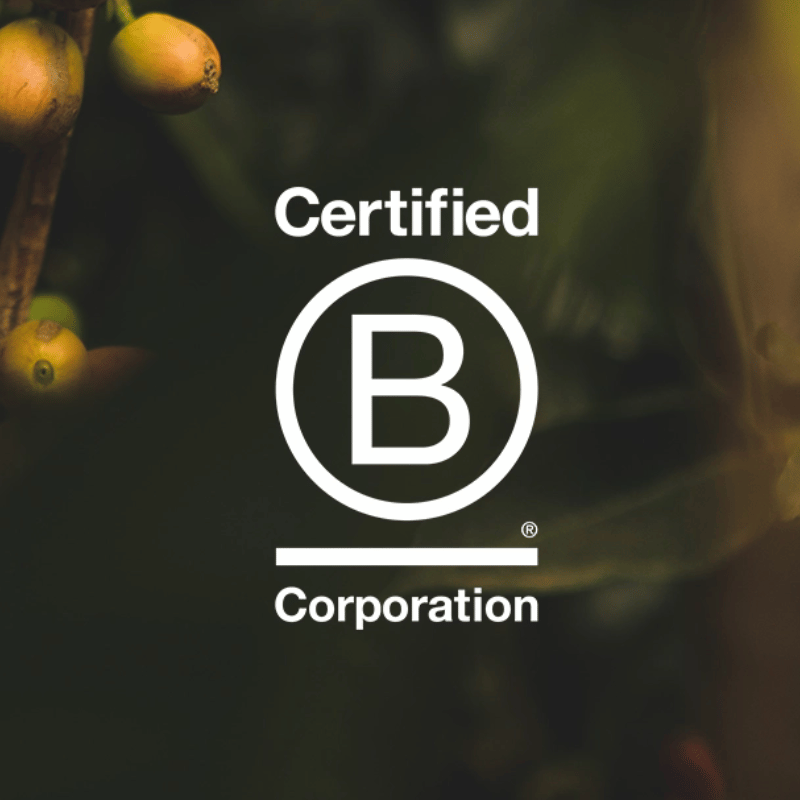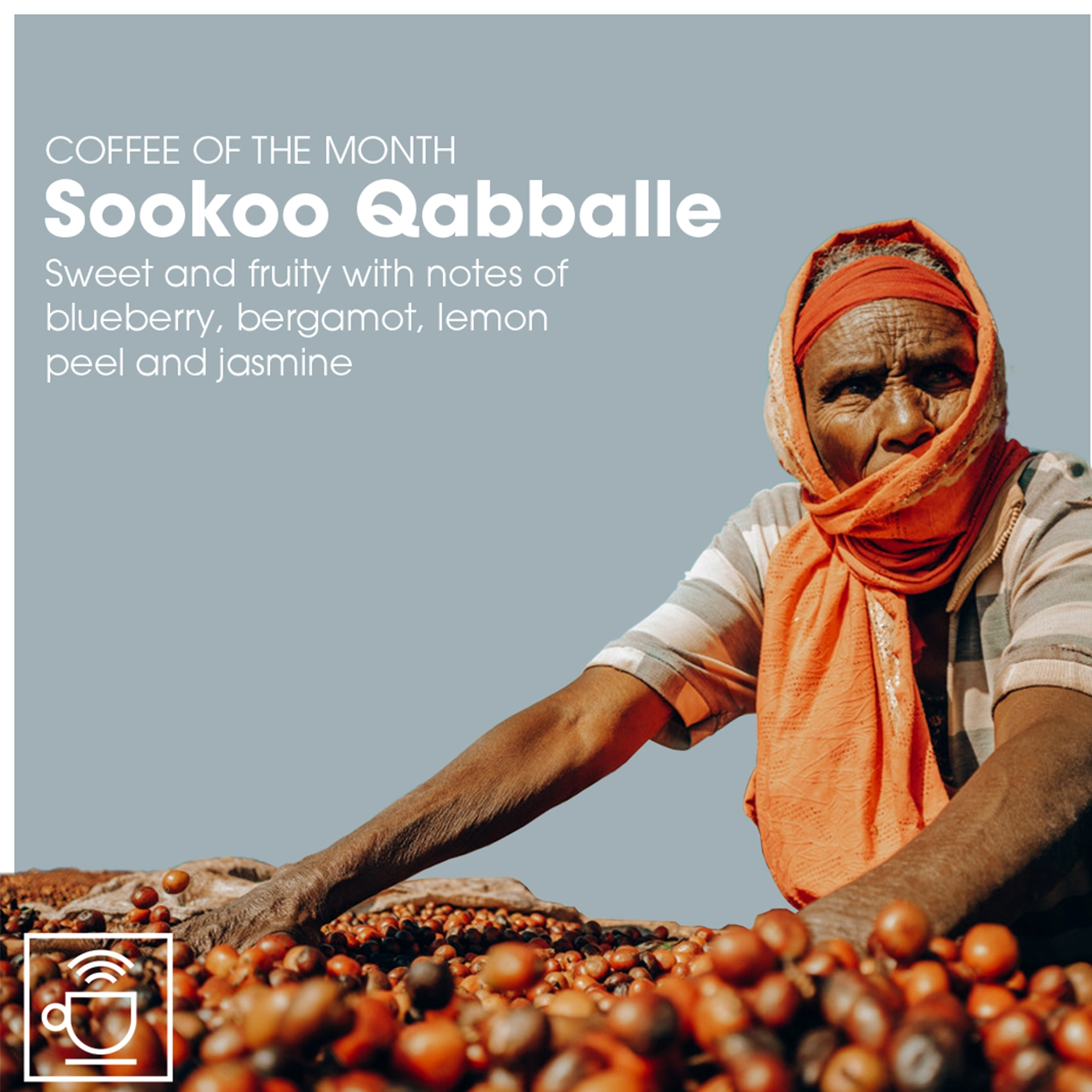
There are a lot of posts and articles about how much the coffee industry is under pressure because of high coffee prices. But if we put things in a slightly larger perspective, the numbers show a different picture.
In reality, the coffee farmers receive a historically low payment – and this is the coffee industry's biggest challenge.
The article was first published in December 2021, when coffee prices had doubled over the course of a year.
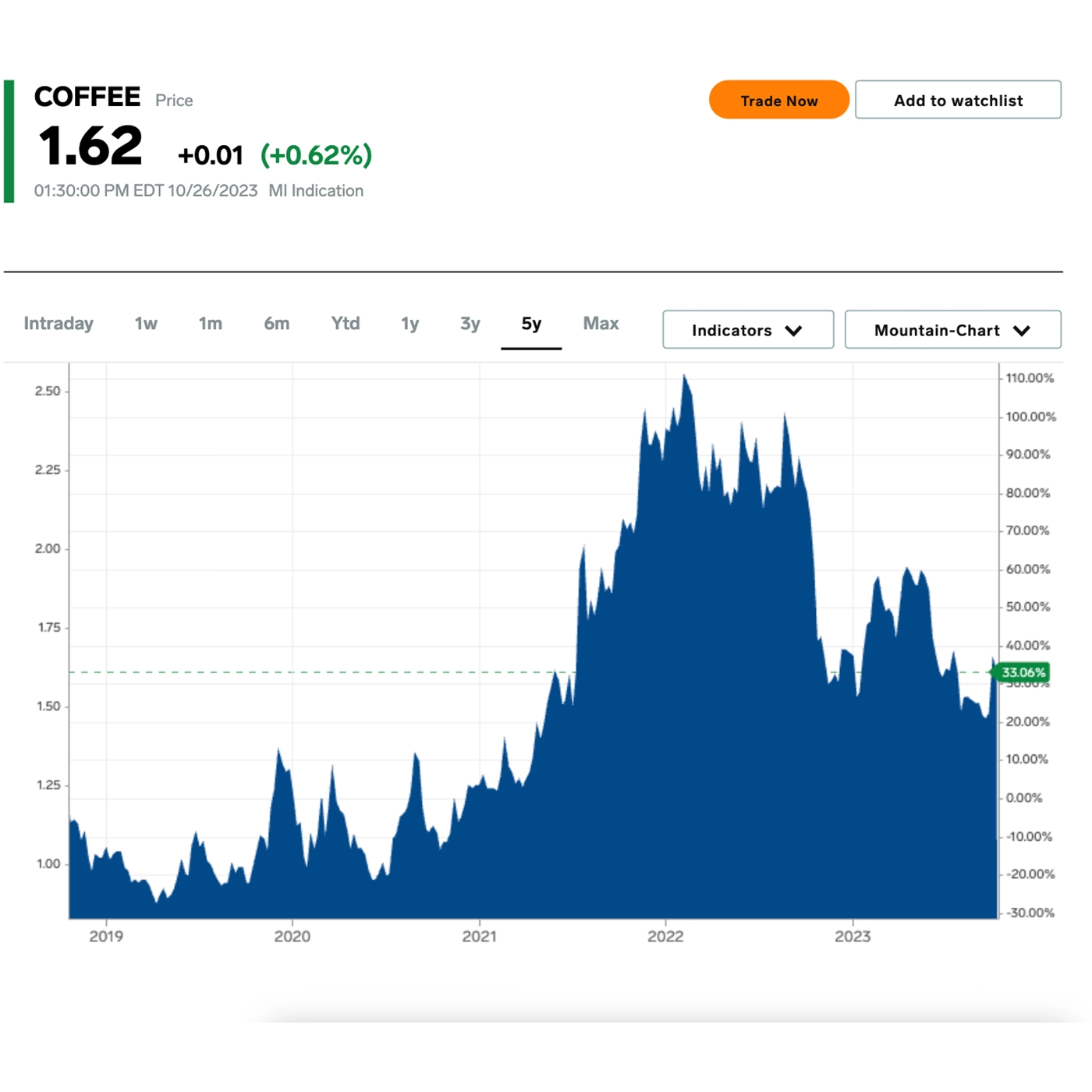
When coffee's "high" price is mentioned, it is often with reference to how the price doubled during 2021.
On the graph, the rise in the middle is clear, but the price has fallen since then. Therefore, this article is still extremely relevant. Underpayment in the coffee industry is still alive and well. This is one of the aspects we are actively working to change.
You can follow coffee prices right here.
If you are curious about the history of coffee prices, you can settle down with a cup of coffee and read on. Then you will gain insight into exactly this.
The Trade in Coffee at C Market
Let's take a quick look at what the C Market is so we can better understand how the price of coffee is determined.
Green coffee beans are traded on the C Market exchange in the same way that oil is traded. The only thing that determines the price is the current amount of coffee that is available on the market. The more coffee there is for sale – the lower the price.
In no way is this price determined on the quality of the bean or the costs of the coffee production.
Around 95% of all green coffee beans are traded on the C Market.
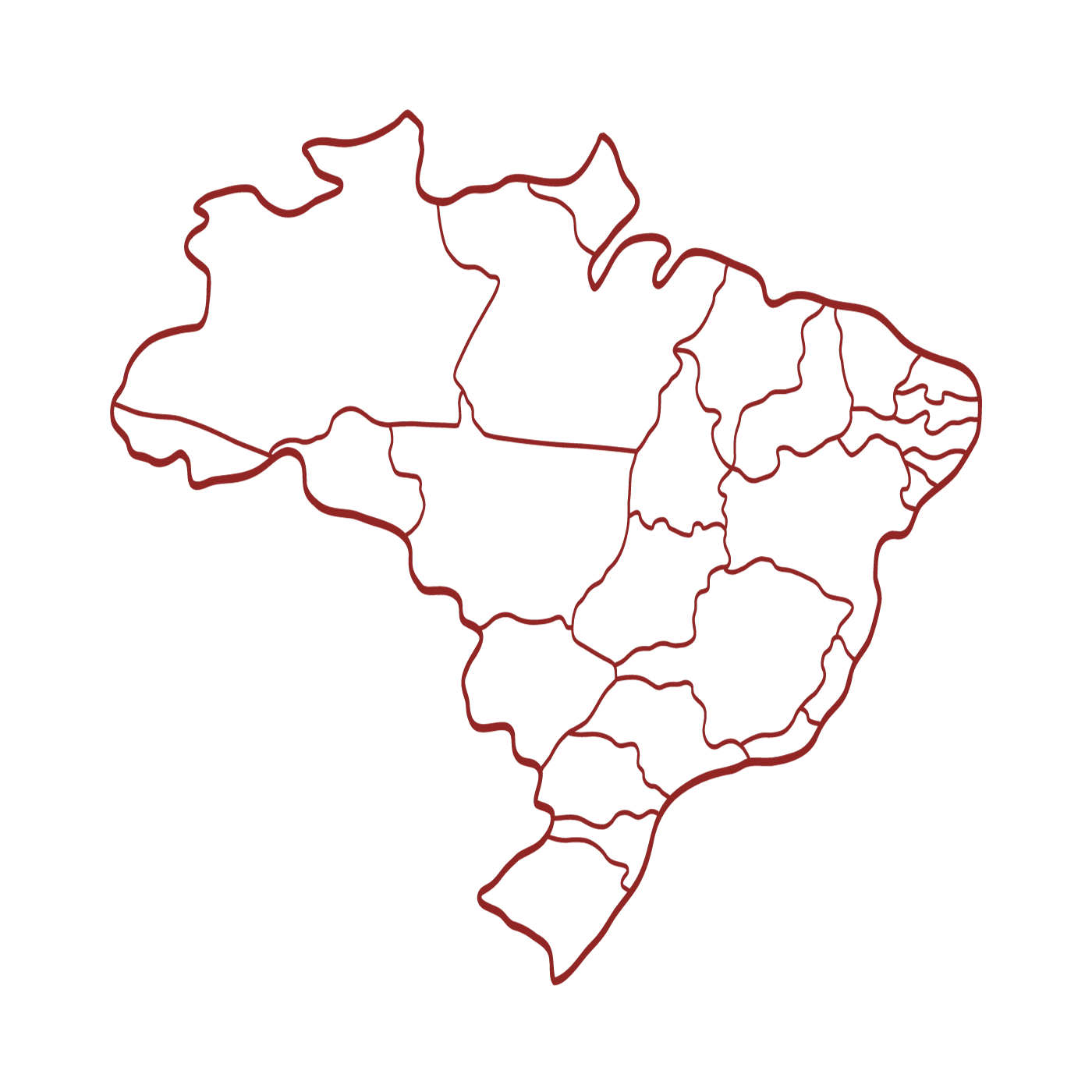
When the Harvest Fails
Influence on Price
Brazil had a really bad harvest in 2021, which is why the price went up at the end of that year. Brazil is the country that produces the most coffee in the world, so when something goes wrong with the harvest in Brazil, it has a big impact on the entire world's coffee industry.
Brazil has been affected by exceptional circumstances with both extreme drought and cold at various critical times of the season.
This means that not nearly as many coffee cherries have been harvested as usual, and thus the C Market price for coffee is higher.
The combination of drought and frost has meant that some coffee plants have not survived – or that they will need several seasons to become productive again. The same issues happened back in 2010-2013 and several times earlier, as you can see in the graph above.
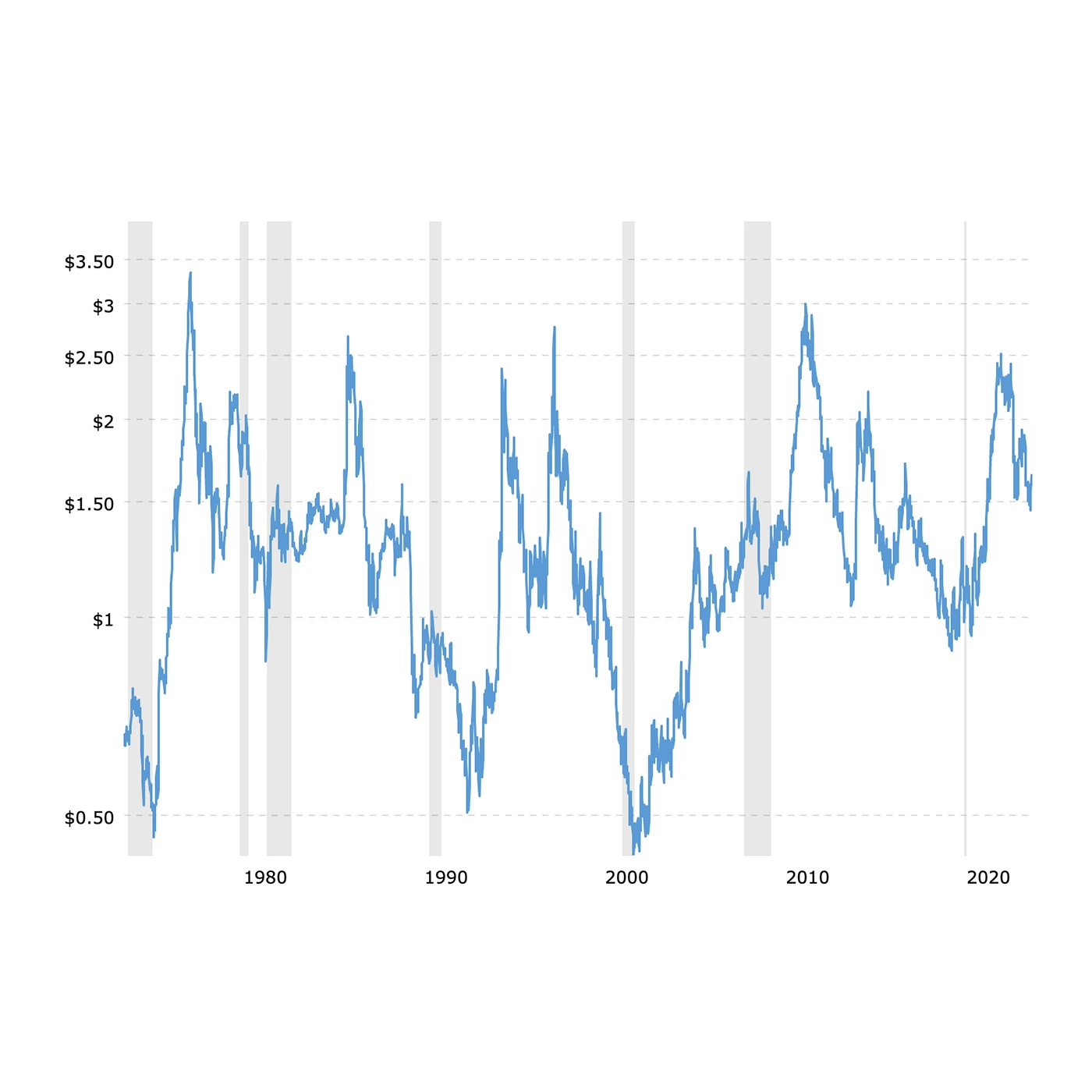
Coffee Prices Are
Catastrophically Low
Let's take a look at the graph of the development of coffee prices with fresh eyes. There is a far more catastrophic reality hidden in the numbers.
When we disregard the fluctuations that have occurred historically, the price of coffee has remained unchanged for the past 40 years!
It must be remembered that when the price has been briefly higher, it has also been an indication that the average coffee farmer has had less coffee to sell. In the price, there is NO development in payment to coffee farmers, which is catastrophic when you consider the rate of inflation in the same period.
If we compare the value of $1 in 1975 to the value in 2021 – then you would need just over $5 to have the same purchasing power today. [1] This means that in order to have the same value as the coffee had in 1976, the average price today would have to be approx. $6.5/lb.
So when the price at the time of writing, December 2021, is $2.45/lb, can't we agree that the price is historically low – and not high?

The Consequence of Systematic Underpayment
The current payment that coffee farmers receive keeps them in poverty.
For many coffee farmers, it is almost impossible to run a profitable business and provide for your family.
The price of the coffee is simply lower than the cost of growing coffee. Thus, we see a large tendency for the small coffee farmers to disappear because they can no longer provide for their families. The farm and the coffee farmer's knowledge are lost and are not passed on to new generations.
At the same time, the quality of the coffee they grow gets worse and worse because they cannot invest in new coffee plants, equipment or maintenance. It's a vicious cycle that makes farms less productive and thus have fewer coffee cherries to sell.
For us, it is crystal clear that this is the biggest problem we have in the coffee business: We are dealing with a system that maintains a systematic underpayment of coffee farmers.

How Do We Solve the Problem?
We must change the system. It does not make sense to look at coffee as a piece goods, where only the quantity available determines the price. All coffees are not the same and we have to differentiate the price.
We must include living costs, production costs and quality in determining the price. At the same time, we must also reward the individual farmer's work with sustainability. We must all be willing to take greater responsibility and to share the risk.
The Specialty Coffee Transaction Guide is doing a great job of collecting data on coffee trade. Here they take the quality of the coffe into consideration, among other things. This gives us as coffee roasters a starting point for how we can price the coffee along with the coffee farmers.
If at the same time we enter into cooperation with the farmers with the starting point that we must grow together – and not at the expense of each other – then we will quickly notice a development.
This will make coffee more expensive than it is today. Especially if we look to the supermarket prices. But it simply does not make sense that 400g of coffee only costs DKK 29.95 when a coffee farmer on the other side of the globe also needs to make a profit.
Transparency and Accountability
We also have to ensure that the money lands in the right pockets. The higher payment must benefit the coffee farms, and not just end up in the pocket of an intermediary.
As coffee importers, coffee roasters and consumers, we have a responsibility to ensure that we behave properly. We must be very aware that our supply chain works for everyone's benefit.
We will have to open up and show the numbers for what we do. We have tried to do that with our annual Transparency Report. It is not perfect. There is much that we would like to do even better and that we are working hard to develop.
We will also have to accept that the coffee farms might not have optimal conditions. How can they when we don't pay them a price they can live on? How can we then expect them to, for example, invest in being environmentally sustainable?
So: NO - the prices of coffee are not historically high. They are historically low .
It is the UN's number 1 world goal to abolish poverty. This is where we have to start if the coffee farms are to have a chance to survive. Better to buy a little less coffee, but make sure it is properly traded.
You can help make a difference by asking your coffee supplier what they paid their coffee farmers for their coffee. If they can't or won't answer, you probably know why.

